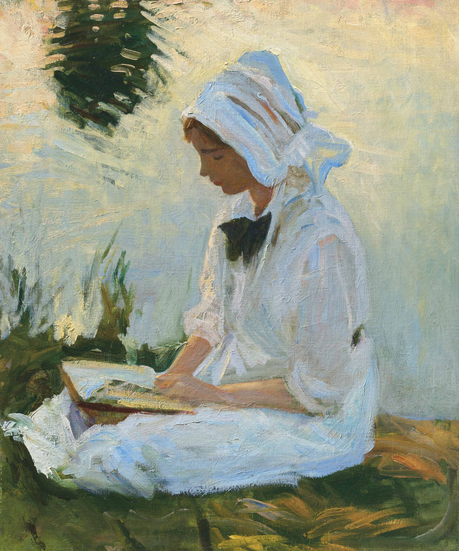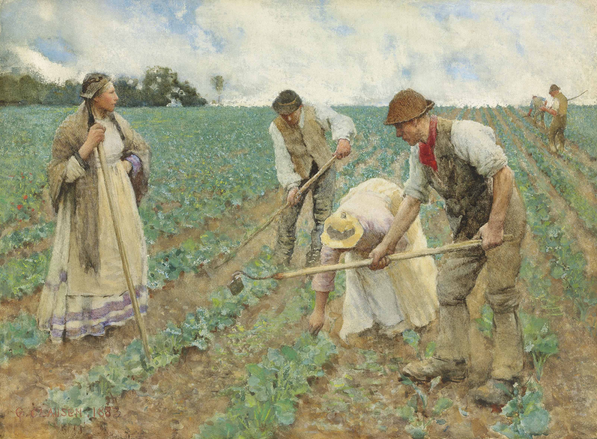IMPRESSIONISM
Discover the artists who broke the rules by setting out to capture fleeting moments in the life of ordinary people, places and things

John Singer Sargent (1856-1925), Girl reading by a stream, circa 1888. 24 x 20 in (61 x 50.8 cm). Estimate: £1,000,000-1,500,000.
In the 19th century a group of artists in France, started to draw and paint landscapes and scenes of everyday life, like cooking, sleeping and bathing. These may seem fairly normal things to see in art now, but in the 19th century most of the art that was made in Europe had much grander subjects such as battle scenes from history, or stories from ancient Greece and Rome.
The impressionist artists were not trying to paint a realistic picture, but an ‘impression’ of what the person, object or landscape looked like to them. (This is why they are called impressionists). They wanted to capture the movement and life of what they saw and show it to us as if it is happening before our eyes. They often painted thickly and used quick (and quite messy) brush strokes. Most of the paintings before impressionism have a much flatter, neater surface and you can't really see the brushstrokes at all. Some of the main impressionst artists are Claude Monet, Camille Pissarro, Alfred Sisley, Auguste Renoir, Edgar Degas.

Sir George Clausen, R.A., R.W.S. (1852-1944), Hoeing Turnips. 14¾ x 20 in (37.5 x 50.8 cm). Estimate: £150,000-250,000
Maak jouw eigen website met JouwWeb